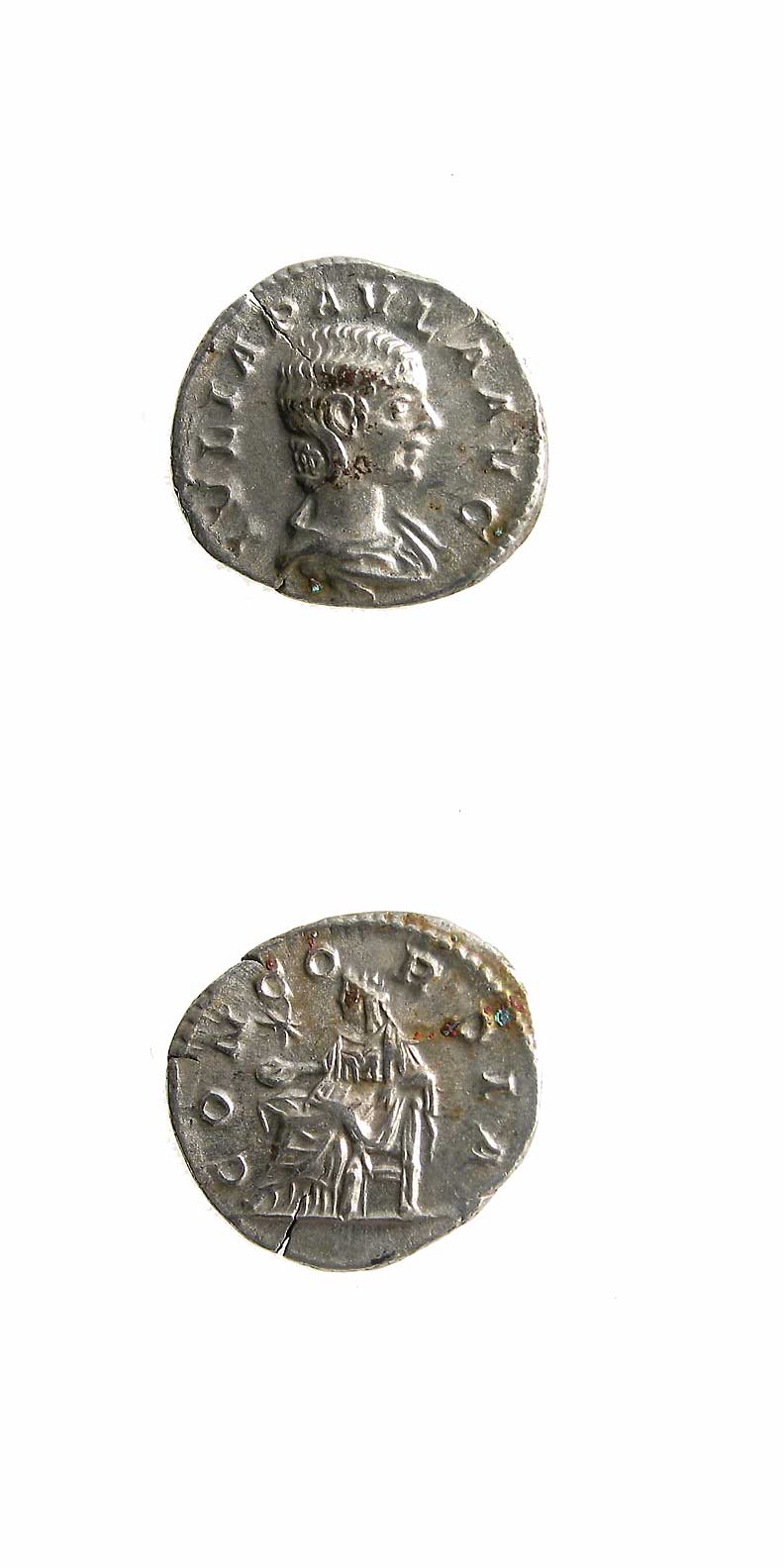Silver Denarius of Empress Julia Paula, 219 CE - 220 CE
Silver
C.5773
Further images
Obverse: IVLIA PAVLA AVG; Draped Bust of the Empress Facing Righ Reverse: CONCORDIA; Concordia Seated to the Left, Holding a Patera, a Star in the Field to the Lef Julia...
Obverse: IVLIA PAVLA AVG; Draped Bust of the Empress Facing Righ
Reverse: CONCORDIA; Concordia Seated to the Left, Holding a Patera, a Star in the Field to the Lef
Julia Cornelia Paula was the daughter of Julius Paulus, a well-known Praetorian Prefect. In the summer of 219 A.D., she married the Emperor Elagabalus. She was his first wife; he would marry three different women only to divorce them all. However, their union was brief and no doubt unhappy, for Elagabalus was known to have taken several mistresses, both female and male, and was disdained by the Roman public for his lewd and lascivious behavior. By the end of 220 A.D., he divorced Julia and stripped her of her title. All for the best though, for less than two years later, Elagabalus would be executed after his marriage to a Vestal Virgin invoked the wrath of the people.
How many hands have touched a coin in your pocket or purse? What eras and lands have the coin traversed on its journey into our possession? As we reach into our pockets to pull out some change, we rarely hesitate to think of who might have touched the coin before us, or where the coin will venture to after it leaves our hands. More than money, coins are a symbol of the state that struck them, of a specific time and location, whether contemporary currencies or artifacts of a long forgotten empire. This stunning hand-struck coin reveals an expertise of craftsmanship and intricate sculptural detail that is often lacking in contemporary machine-made currencies. This ancient coin is a memorial an empress passed from the hands of civilization to civilization, from generation to generation that still appears as vibrant today as the day it was struck.
Reverse: CONCORDIA; Concordia Seated to the Left, Holding a Patera, a Star in the Field to the Lef
Julia Cornelia Paula was the daughter of Julius Paulus, a well-known Praetorian Prefect. In the summer of 219 A.D., she married the Emperor Elagabalus. She was his first wife; he would marry three different women only to divorce them all. However, their union was brief and no doubt unhappy, for Elagabalus was known to have taken several mistresses, both female and male, and was disdained by the Roman public for his lewd and lascivious behavior. By the end of 220 A.D., he divorced Julia and stripped her of her title. All for the best though, for less than two years later, Elagabalus would be executed after his marriage to a Vestal Virgin invoked the wrath of the people.
How many hands have touched a coin in your pocket or purse? What eras and lands have the coin traversed on its journey into our possession? As we reach into our pockets to pull out some change, we rarely hesitate to think of who might have touched the coin before us, or where the coin will venture to after it leaves our hands. More than money, coins are a symbol of the state that struck them, of a specific time and location, whether contemporary currencies or artifacts of a long forgotten empire. This stunning hand-struck coin reveals an expertise of craftsmanship and intricate sculptural detail that is often lacking in contemporary machine-made currencies. This ancient coin is a memorial an empress passed from the hands of civilization to civilization, from generation to generation that still appears as vibrant today as the day it was struck.
1
of
2





